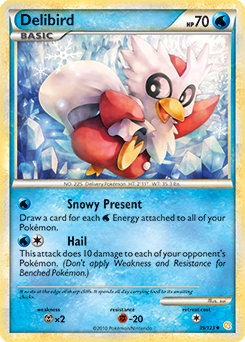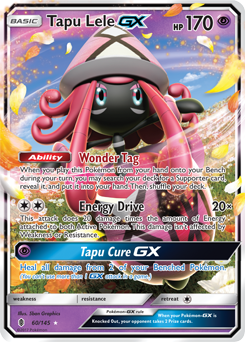New Year Round-up: 10 Lessons from 2017 (Part 1)

The ends and beginnings of years make for great times to do round-up lists and reviews of the events that transpired, and today will be no different. In this two-part series, I will be going over what I consider to be my ten most important lessons about competitive Pokemon TCG play, strategy, and deck-building in the year 2017. Make no mistake: this is not a normal top ten list at all! We aren’t summarizing the year getting too social, or even ranking the ten items featured (that might be for another list at another time, in a setting more appropriate than paid premium content). Instead, we’re considering what the sets, names, Pokemon, and stars of 2017 have to teach us, and what we need to do in order to achieve those New Year resolutions for 2018.
We’ll be addressing the following five topics in today’s article:
- A certain person’s victories
- The rapid changes of the metagame
- Cheating and unsportsmanlike conduct
- BIIIIIIIIIIIIIIG tournaments
- The rise of professional teams
Trust me: There are some valuable lessons from each of these unique developments. So sit tight as we review an important year for Pokemon cards in a manner that lets us grow as competitors.
Lesson One: Consistency is Key

The event: Tord Reklev wins two International Championships in a row.
The lesson: Deck consistency and deck building are incredibly deep, thoughtful processes you should master in order to succeed.
The idea of International Championships is now barely more than a year old, yet thanks to them we have seen one of the greatest accomplishments in the game’s history. Tord Reklev, a long-time Norwegian player, was able to earn major wins at both the North American International Championship as well as the European International Championship.
That’s two wins in a row! In interviews during the event, Tord attributed his success to “hard work.” That’s certainly true of most major tournament winners in the game’s history, but let’s dissect this a little bit: What has Tord done that no other player has done? What is the missing element when talking about the idea of winning two of the most prestigious events in the game’s history?
Having been exposed to his Drampa-GX / Garbodor at the NAIC in two separate rounds, and having spoken to him a bit about the more interesting inclusions in his winning Zoroark-GX / Golisopod-GX list at the EUIC, I have determined that Tord views consistency on a much deeper level than most other deck builders do.
This highlights a deck-building skill I’ve long written about and praised in other places – a skill I call the zeroth stage of deck building. Basically, this is not a stage so much as a mindset in which you accept that you are always flexible in your deck ideas, and willing to reevaluate or change the most basic of approaches in how you design your decks.
For example, many players considered this the “first stage” of building a list once Standard rolled around: Pick your lines; throw in 2-3 Tapu Lele-GX, maximum counts of Professor Sycamore and N, and one Brigette. An example of “zeroth stage deck-building” would be when I went against common knowledge at the time and advocated running two Brigette in certain lists. Others started running two Brigette independent of my own thought process, and from there we saw the modern Gardevoir-GX evolve thanks to groups like X-Files and players like Seena Ghaziaskar.
Yet just in time for the EUIC, Tord came along and again shook up the way players viewed basic deck building ideas by running three Brigette. At the NAIC, he became famous not only for his win, but for running a complete four-copy play set of Tapu Lele GX. While even to this day it’s debatable how optimal running a fourth Tapu Lele may be, there is simply no denying the end result of that decision: a victory at the world’s biggest tournament. Tord again came and surprised last month with three Brigette, another decision doubted by many because of the idea of diminishing returns.
In case you don’t know what those are, “diminishing returns” are basically when you get less benefit for adding something. In Pokemon cards, everything related to probabilities is important, so why run a third copy of a card like Brigette if it isn’t adding much? After all, doesn’t that just increase the number of ways to get Brigette turn one from nine (three Tapu Lele, four Ultra Ball, two Brigette) to ten?
Not so fast. As Tord himself explained to me, multiple things happen when you run an extra Brigette. You not only increase your outs to using it turn one, but also put less pressure on your other consistency cards. If you have played even a few games of the Standard format in a tournament setting, you know that turns where you simply play a Brigette from your hand to fill your Bench are much more resource-friendly than turns where you use an Ultra Ball to grab it. By running an extra Brigette, you’ve just opened up many more opportunities to not discard crucial resources. Thus, it was at worst an understandable decision, and at best an incredible foresight and innovation of deck building.
But why is a detail as boring as one, two, or three Brigette such an important lesson? Why does something that sounds so silly to a non-competitive player actually define one of Tord’s greatest champion-level skills? Because it shows that the best players, both as individuals and as a group, are on a never-ending quest to figure out and improve their approach to building decks. Be like this, and you’ll be ahead of hundreds of other players you otherwise would have been equal to in skill.
This concludes the public portion of this article.
If you'd like to continue reading, consider purchasing a PokeBeach premium membership! If you're not completely satisfied with your membership, you can request a full refund within 30 days.
Each week we post high-quality content from some of the game's top players. Our article program isn't a corporate operation, advertising front, or for-profit business. We set our prices so that we can pay the game's top players to write the best content for our subscribers. Each article topic is carefully selected, goes through multiple drafts, and is touched up by our editors. We take great pride in our program!

